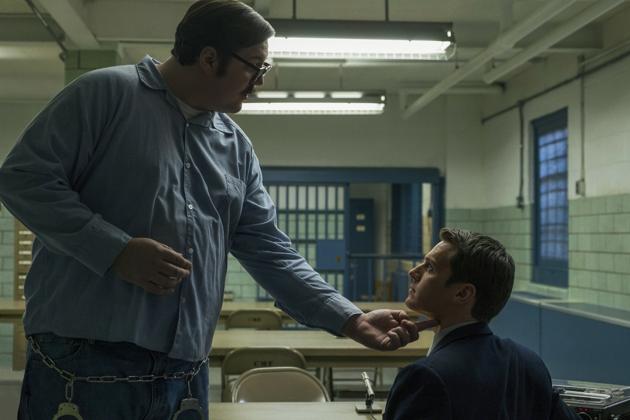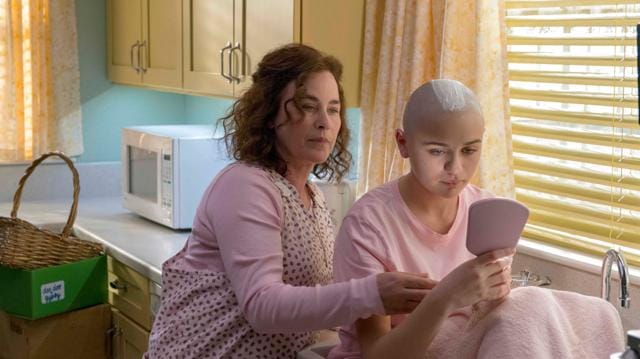On screen, see how crime is keeping it real
New procedurals take a stab at the truth, recreating famous cases, but with a twist
There are far too many serial killers on the loose. On streaming platforms and podcasts, old delinquents are bumping into new ones. In scripts, the motive has changed – it’s no longer the jilted lover or unpaid debt. And the murderers are not just based on real criminals; they’re often detailed recreations of actual, famous ones – Charles Manson, Nithari’s Surinder Kohli, Son of Sam – and steal the thunder away from their gruesome crimes. As serial killer Ed Kemper’s character states in the series Mindhunter, “I just wanted to see how it felt to shoot Grandma.”

The genre picks up right where writer Truman Capote left it in the 1970s. And audiences can’t look away.
If crime shows of the previous years focused on pulpy re-enactments, stock procedurals with stereotypical heroes, and one crime per episode, today’s fare is a step up. With Joe Berlinger’s Netflix documentary, Conversations with a Killer: The Ted Bundy Tapes, there are never-before-heard audio clippings of the sociopath on death row. There are bits from over 100 hours of recordings, and footage from his 1989 trial in which he admitted to necrophilia and decapitating his victims.
The Hulu show, The Act, does more than re-create of the murder of Dee Dee Blanchard, by Gypsy Rose, the healthy daughter, she’d forced into a wheelchair and surgeries for years. It draws on reportage and trial to show their power dynamic, relationship and the mental toll it took on Rose. The Amazon show Lorena, follows the case you thought you knew – Lorena Bobbit famously cut off her husband’s genitals in 1993. But the series uses interviews with the two, plus the police, to paint an image of domestic violence and how women are discussed in the media.

The stories transport you to the scene of the original crime, offering new information and twists in tales you thought you knew. With the Netflix docu-series The Keepers, directors are also turning into sleuths to uncover new material. Some 40 years after the strange disappearance and murder of a nun Cathy Cesnik, her friends and students are still looking for her killer. This is where director Ryan White steps in, following the amateur detectives to discover a cover up by the Catholic church.
Even when they’re fictionalised, the crime shows are roping in real-life players to get their facts right. In Mindhunter, the makers roped in John E Douglas, the original retired FBI agent who penned the book about criminal profiling of the same name, as a consultant.
ABOVE THE LAW
“The new wave of true-crime programming is allowing the audience to enter at the very end,” says Ram Devineni, director of The Karma Killings, an 84-minute 2016 documentary on the Nithari killings. “The best films try to correct something that went wrong, such as a miscarriage of justice, or focus on the true killer or killers who got away.”
Most point to the 2015 Netflix show, Making A Murderer, as the genre’s watershed moment. The series, which was filmed over ten years, shed new light on an actual American criminal case, suggesting that the man caught for a murder was in fact a victim of botched-up police investigations. And the series is set to take a new turn, as fresh evidence, alleges that it was in fact another man who performed the killing.
“The really good crime stories are the ones that perform a public service,” says writer Avirook Sen who wrote a book following the Aarushi murder case. “The [creators] make it bigger than a crime story. But through that prism you look at society, you look at attitudes; you look at systems, or what the state could do to you.”
A NEW JURY
That’s true in the case of Sarah Koenig’s 2014 podcast Serial, which examined the case of Adnan Syed, who was convicted of murdering his girlfriend Hae Min Lee. The podcast was downloaded over 80 million times and the details it unearthed won Koenig a Peabody journalism award and even led to a new trial for Syed. It’s paved the way for audio shows like Dr Death, S-Town, In the Dark, and Criminal and Dirty John, which went from podcast to a show on Netflix.
The format is interactive, some of them encourage anonymous tips, and track down loose ends. The viewer feels they are part of an active investigation and incentivises them to return for the next episodes. Something that network TV or streaming websites have never been able to crack. “With podcasting, you do not need to show anything,” says Devineni, “And audiences are willing to accept this and create the missing visuals in their mind. And that’s what makes it fascinating.”
Get more updates from Bollywood, Taylor Swift, Hollywood, Music and Web Series along with Latest Entertainment News at Hindustan Times.
Get more updates from Bollywood, Taylor Swift, Hollywood, Music and Web Series along with Latest Entertainment News at Hindustan Times.






